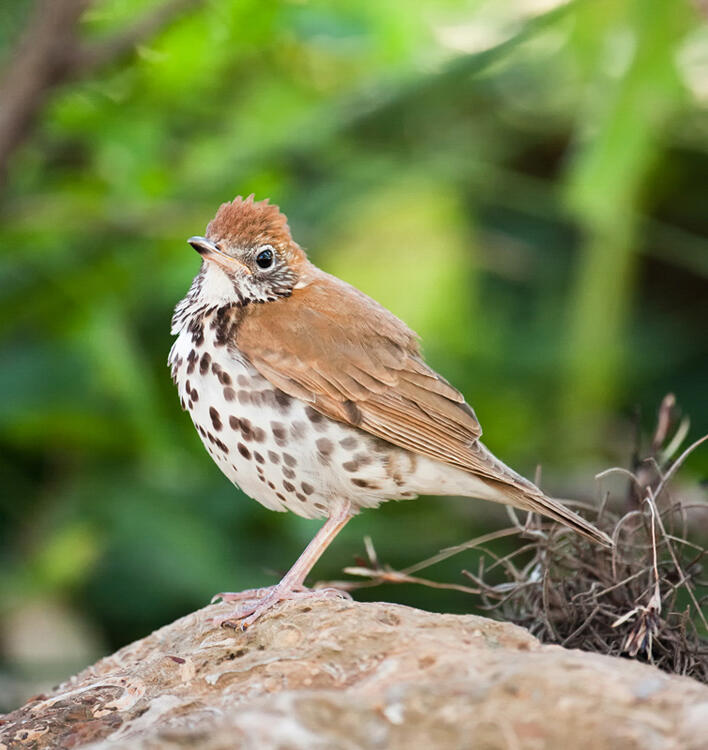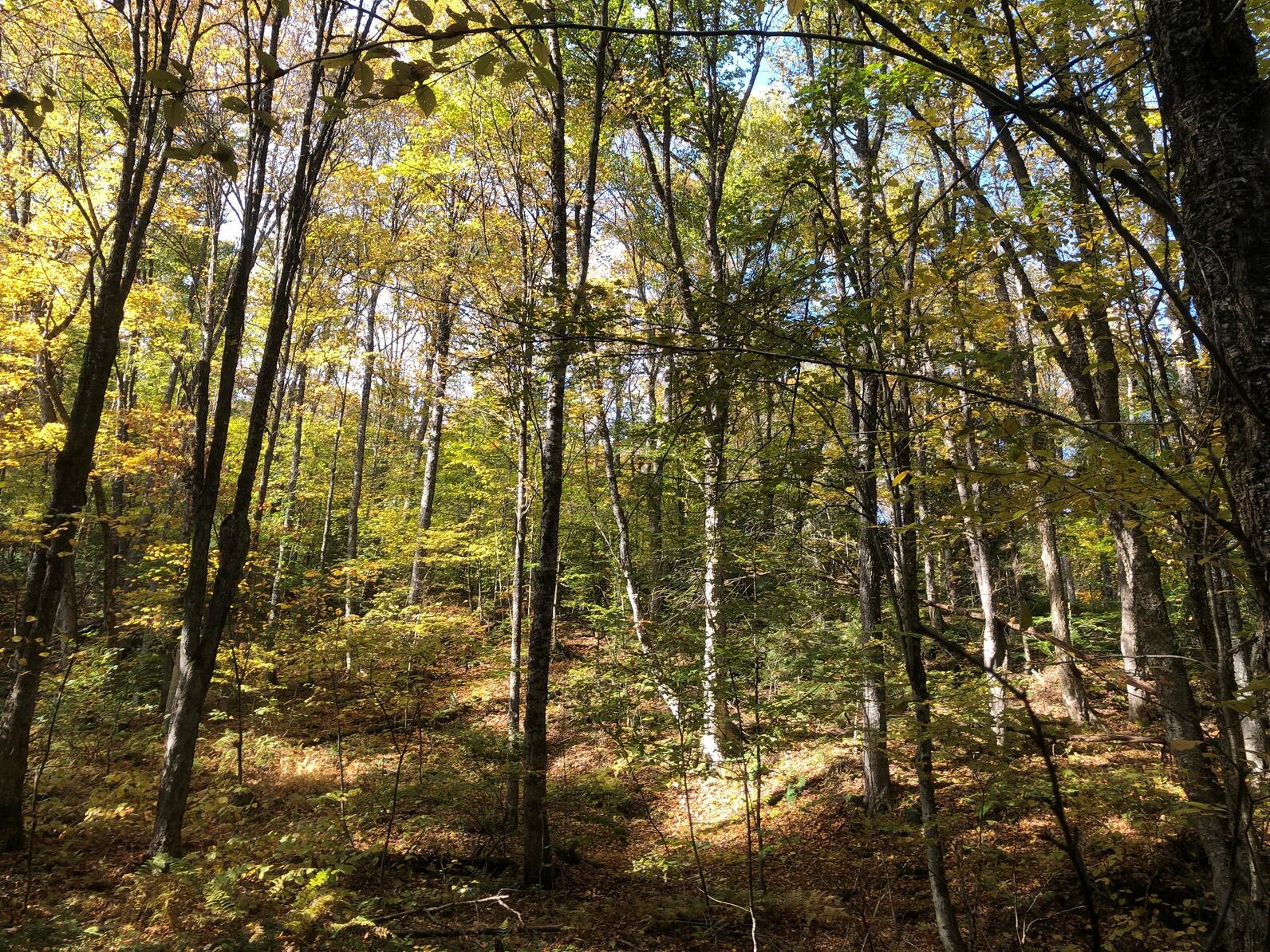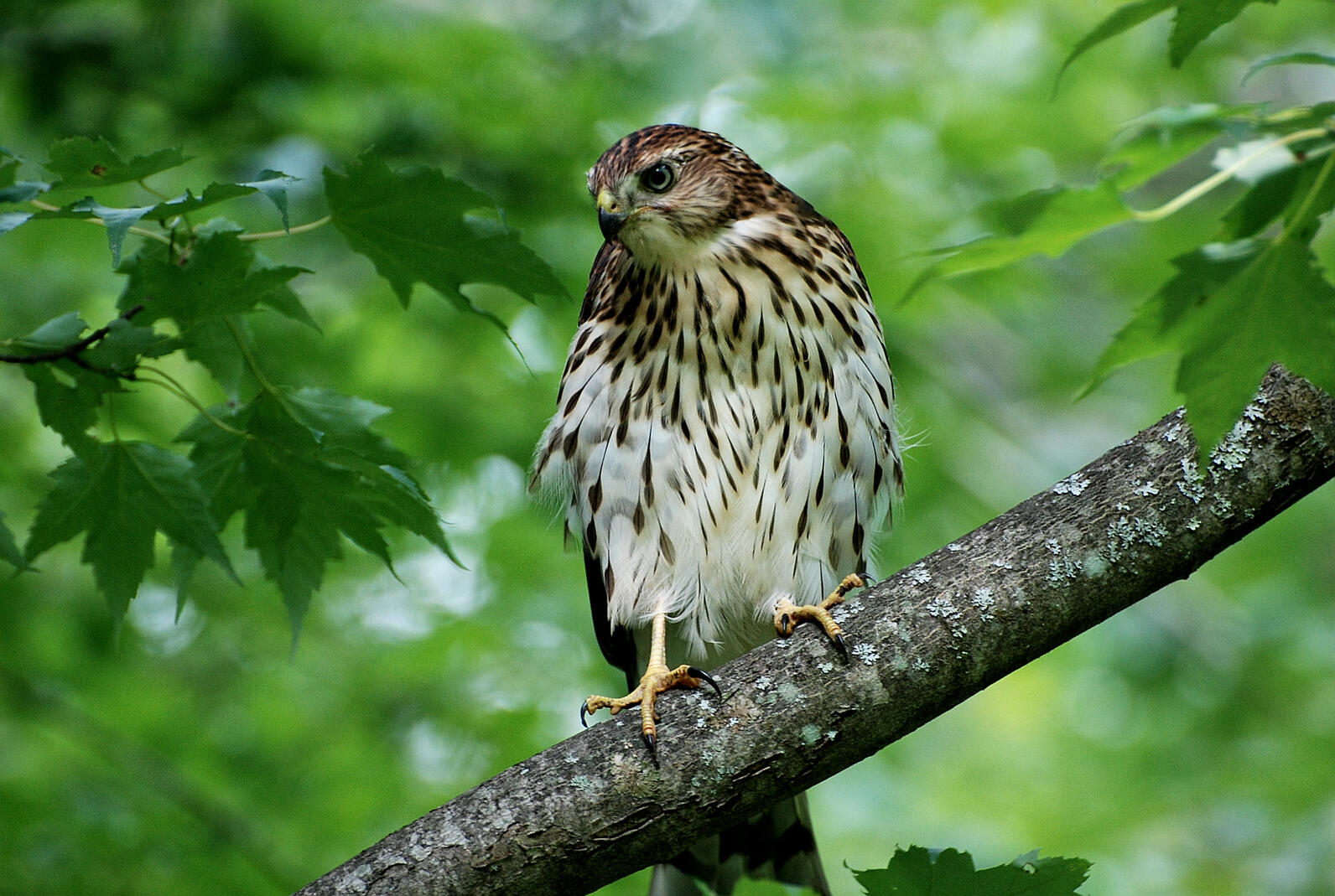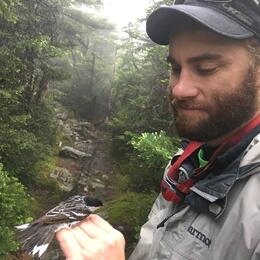This article also appears in the June 2023 Vermont Woodlands Association Quarterly Newsletter.
A wealth of scientific research has firmly established that our climate is rapidly changing and that this shift is due to human greenhouse gas emissions coupled with unprecedented anthropogenic land-use change happening across the world. While the Earth’s climate has historically varied over geological time, the level of climate variability, magnitude and direction of changes seen in recent decades is far outside of what we know of historical norms. Consequently, we face a global extinction and biodiversity crisis as plant and animal populations attempt to adapt and persist to this changing climate alongside the ever-increasing multitudes of stressors imposed by the human species. Sadly, as only one measure of this crisis, we have lost nearly 3 billion birds in North America since 1970; a significant proportion of which are forest birds, including species that call Vermont home.
As a group, birds are richly diverse, readily observable, and exist in an equally wide array of environmental conditions across the landscape; this fact makes birds excellent indicators of habitat conditions; monitored over time, birds tell the story of changes to those conditions. And indeed, their numbers are telling us that major change is afoot. Not only are populations in decline, but we are also seeing a rapid shift in the breeding distribution of birds across both latitude and elevation, signaling a geographic response to climate change.

While climate change is a challenge on a global scale, the role of the landowner is ever important; with nearly 80% of Vermont forest under private ownership, the decisions landowners make on the land, now and going forward, will absolutely influence the future for our forests- and the birds that occupy upon them. We have the opportunity, if not the obligation, to consider how we are going to help our forests, and those that depend upon them, adapt to a changing climate.
An answer to how we maintain our forests and the birds that rely on them may be rooted in an understanding of how species have historically adapted. Principally, what aided species with adapting to previous changes in climate is the fact that 1) landscapes were relatively unfragmented and diverse, allowing species to move across the landscape as conditions changed, and 2) for the most part, past changes in climate happened gradually, giving species many generations over which to adapt to these changes. These populations were also relatively robust otherwise, without other impacts that modern bird populations face- for example, outdoor cats, building strikes, invasive species, and pollution, among others.
So, what can we, the forest landowner, do then? Well, a principal strategy is to keep forests intact and connected across the landscape. To approach this at scale, here in Vermont, Vermont Conservation Design offers a strategy for the targeted conservation of intact forested landscapes, as well as offers an easily accessable online natural resource atlas, BioFinder, with which one can evaluate how their lands relate to these conservation targets and known ecological features. Efforts like Cold Hollow to Canada, and the Staying Connected Initiative are examples of the application of these principles through focused efforts to work with landowners to maintain vital connectivity across these key corridors. Keeping this landscape intact is essential to helping our forests, birds, and greater wildlife adapt to climate change.

We can also work to keep forests healthy, parcel by parcel, stand by stand, within these connected landscapes- which will make them more resilient. And we need to work to keep forests as diverse as possible. Not unlike assets within a financial investment portfolio, forests are most resilient when there is a diversity of conditions across which risk and uncertainty are spread. Thus, more than ever before, we must apply the ever-evolving body of science in consideration of the risks and uncertainties associated with the effects of climate, and changes to that climate, on our forest ecosystems. This is all to say that, in order to allow forests to adapt to a changing climate, landowners must be able to anticipate how the forest is vulnerable to change and to work to mitigate risk now and going forward. In this way, climate change has become a vital consideration for any forest management planning process.
Some are thinking about how to transition our forests where the prospect of resilience and resistance to change is less likely; so-called ‘adaptive silviculture’. Given that forests establish and grow over centuries, an emerging strategy to maintain continuity of future forests is to promote tree species/forest communities that are likely to fare better than others under future climate conditions. It has become vital to consider the climate change vulnerability of the tree species that comprise our forests- and to account for various scenarios of limited productivity of these species relative to conditions provided by the site and future climate conditions predicted for that site. For example, Northern red oak is a species that currently grows in Vermont and is predicted to fare better than others in the future; many are promoting red oak, either through management or plantings, within their forests as a means to ease the future transition. Transition of forests into non-analogue forest communities is one scenario we must consider in our effort to maintain habitat for birds, for greater biodiversity, and for ourselves, amidst the changes to come.

An excellent resource for thinking about climate vulnerability of your forests and identifying management strategies for adapting your forests to change is the Climate Change Response framework offered by the Northern Institute of Applied Climate Science. Audubon Vermont is currently using this framework to develop climate and carbon smart forest management plans for the Green Mountain Audubon Center property in Huntington. And we are working towards bringing this to our landowner network through our Woods, Wildlife, and Warblers program as well.
All of us rely on healthy forests. Our efforts today to conserve and steward our forest are ever important. In an age of unprecedented change, we must remain proactive, observant, and adaptable. Thankfully, none of us face this alone. There is an ever-emerging array of resources with which to help us remain adaptable- many of which are available in partnership with the Vermont Woodlands Association, including Audubon Vermont and the Woods, Wildlife, and Warblers Program.
Happy spring y’all; get out there and enjoy it.








